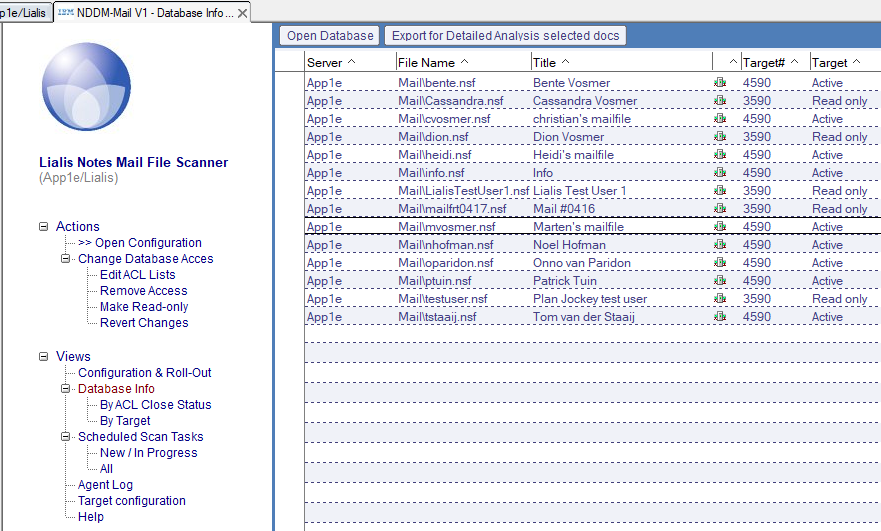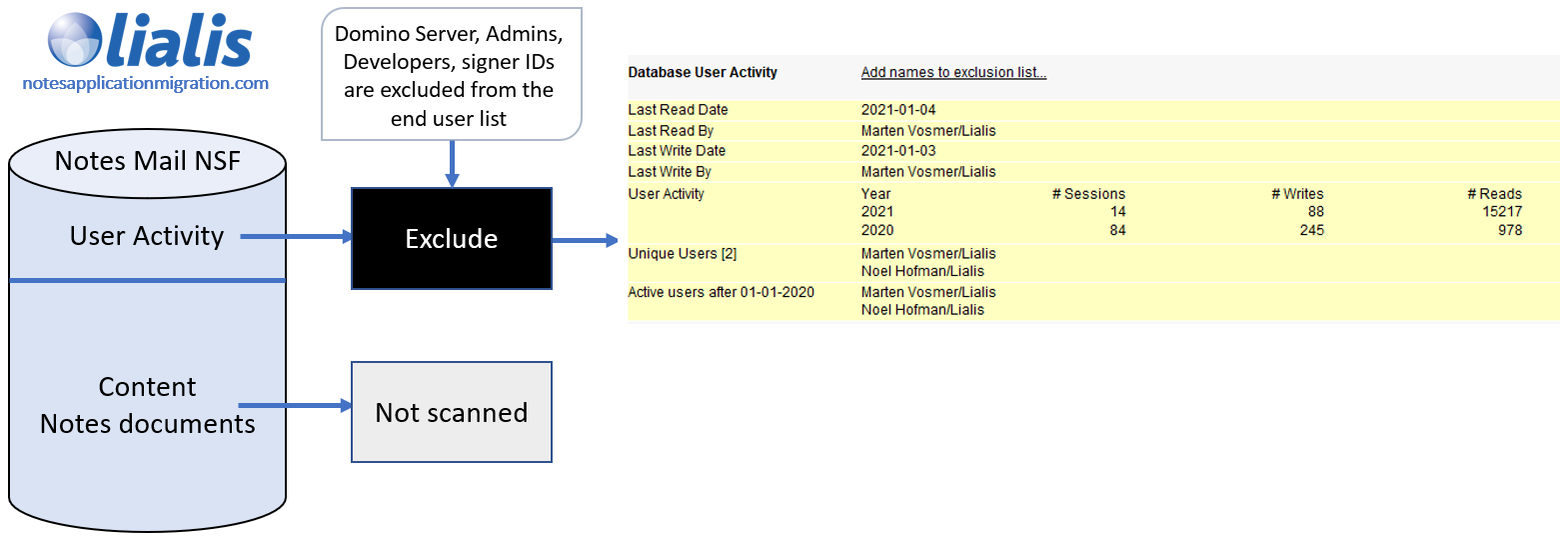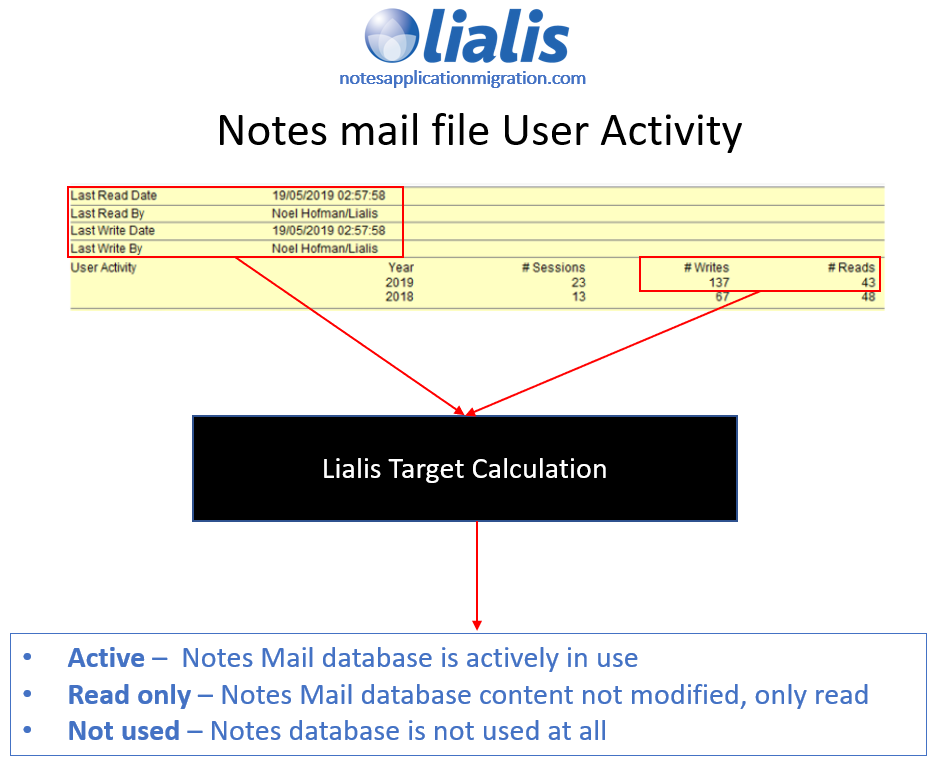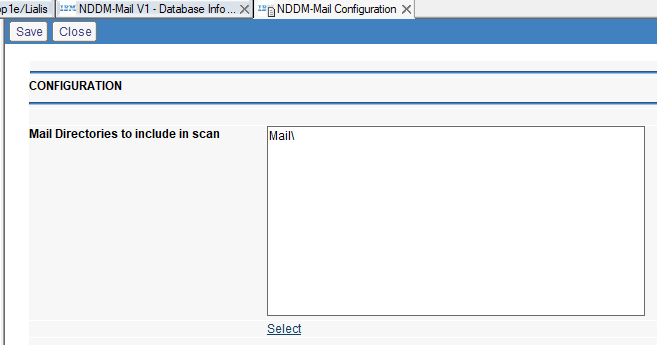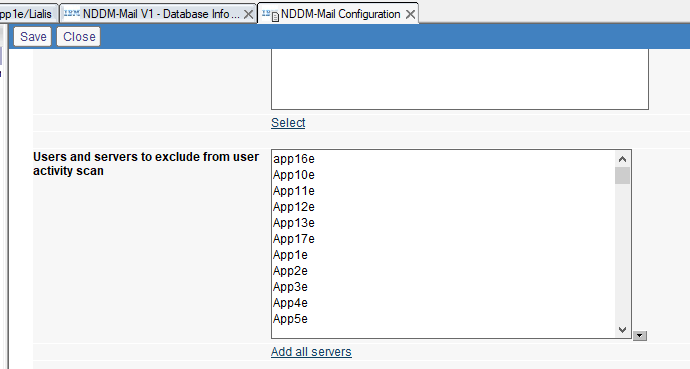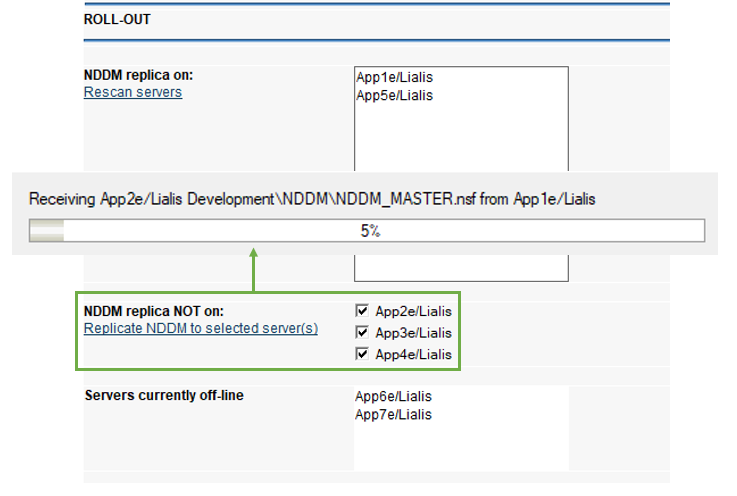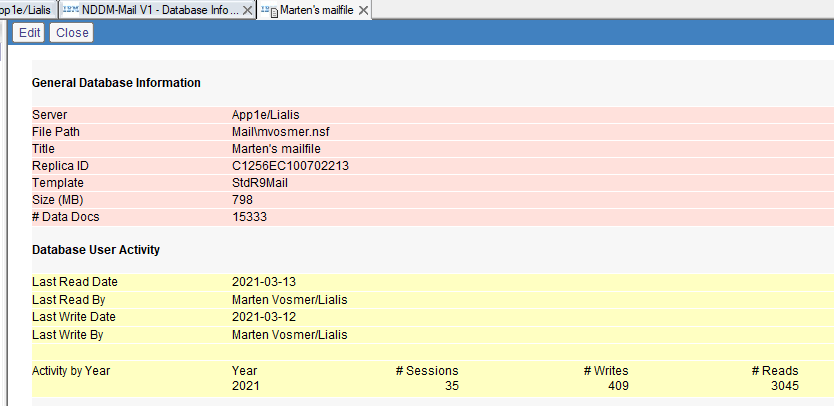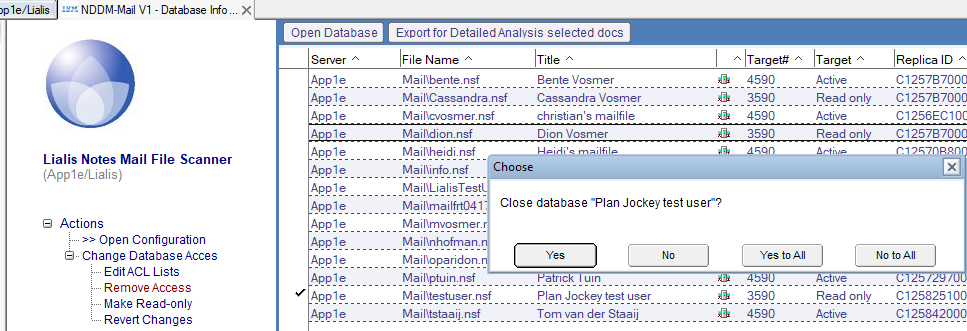Lotus Mail Scanner
For companies that wish to get more insight in their Lotus Mail Domino environment we have developed Lialis Domino Mail Insights (‘LDMI’). This is a IBM Domino tool that continuously scans your HCL Domino Lotus Mail files for end user activity statistics.
Download Lotus Mail scanner now for free!
High level functionality
LDMI scans your Domino Lotus nsf mail environment and assigns one of the following targets to your HCL IBM Lotus Domino Mail files.
- Active
- Read only
- Not used
The tool displays these targets for the HCL Notes mail files in a user friendly interface as displayed below:
LDMI carries out the following Lotus Mail scan tasks, fully automatic in weekly intervals:
- Scan all Lotus Notes Email files on the Domino servers for user activity details
- In the user activity scan non-end users like Domino servers and Domino IT personnel are excluded from the user activity scan (not relevant)
- Automatically calculate the target of each Notes mail file (Active, Read only or Not used) based on algorithms
- Carry out the same analyses (listed in point 1, 2 and 3) in subsequent runs (interval is 1 week)
- Newly created Lotus Notes mail files are added and analyzed
LDMI is based on its bigger brother NDDM which can be used to also scan Notes applications. LDMI only scans Lotus Email files that have a Notes mail file design.
The Fundamentals
The image below shows how LDMI scans Lotus email files.
For accurate Domino server mail scan results, it’s important to exclude all non-end users from the Notes database User Activity scan.
Analyzing the IBM Lotus Notes database scan details
LDMI holds automated analysis algorithms to determine the User Activity of Lotus Mail files. The tool automatically classifies the Notes mail databases in 3 buckets; ‘Active’, ‘Read only’ or ‘Not used’. The algorithm uses read and write dates – and quantities for the particular database.
Feature list LDMI
This section explains in more detail the various components of LDMI accompanied by screenshots.
1. Configuration
In the LDMI configuration you can set the Domino folders where the IBM mails files, that need to be scanned, are located.
You can set the non-end user names that you want to exclude from the User Activity scan resulting in real end users. Typically, you keep updating this list during the scan process since names that are irrelevant will surface.
2. Roll-Out
LDMI quickly creates replicas of the LDMI Notes database to all (or a selection of) Domino servers in the Domino domain that you are planning to scan with LDMI. Your Notes client will create the new replicas to scan the IBM Mails. This may take a short while depending on the amount of Domino servers you are actually going to scan.
The benefit of this roll-out is that the scanning of IBM Mails is done simultaneously across all servers, doesn’t consume network bandwidth and is blistering fast.
3. User Activity Scan
Below you see a sample result of a Notes mail file User Activity Scan.
4. Automatic Target Calculation
Getting all this info out of your Notes databases is great but it still needs to be analyzed. To avoid a lot of manual work LDMI has a built-in target calculation algorithm function that automatically does most of the analysis work for you. In a matter of minutes LDMI classifies all your Notes databases in 3 buckets: Active, Read only or Not used.
5. Excel Export
With one mouse click you can export all scan and analysis details to Excel for further analysis. This is to ensure you haven’t missed anything. The export also allows you to enrich the data generated automatically by LDMI since, as always, there are exceptions to the rules and algorithms applied.
6. Change Notes mail file access in batch
LDMI has an in-built function to batch-wise change the Notes database access (ACL) for end users. There are two options; ‘no access’or ‘read-only’. Reverting the changes can be done in s simila manner.
This is for example useful to find out if databases are really not used or only read. If users don’t complain that they no longer have the required access you can safely assume your target assignment is correct.
More details how to install, configure and use LDMI
Please visit the LDMI technical manual for a detailed instruction how to install, configure and use LDMI in your Lotus Domino environment.
Summary
In any IBM Mails and Domino server mail migration (decommissioning) project it’s crucial to gain a good understanding of the Lotus mail migration scope before you start. This will save you a lot of headaches and avoids unnecessary allocation of a large budget and project team. This is exactly why we offer:
- LDMI to scan and analyze your Notes mail databases, and
- NDDM to scan and analyze the Notes applications.
LDMI allows you to fully automate the Notes Domino Mail migration scan and analysis process. The algorithms, that are based on our vast experience, classify your Notes mail estate into clear categories which you can verify and adjust in Excel if you want.
Interested to learn more? Please hit the contact button or simply download the LDMI tool via the download option at the beginning of this page.

